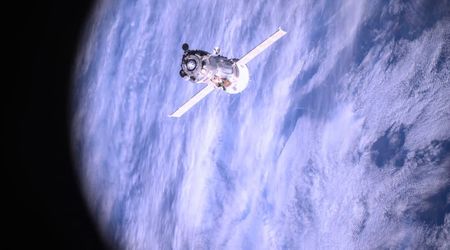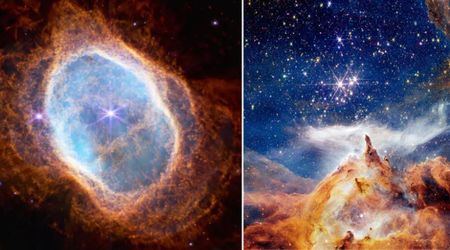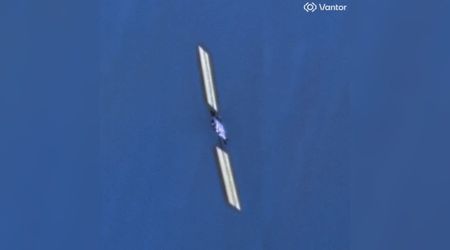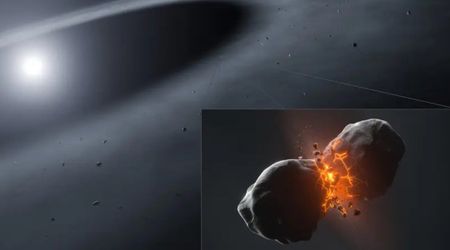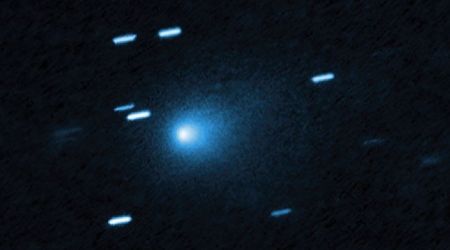How to focus your telescope


While we all enjoy watching the night sky, some people take it a step further, ensuring they get the best possible view of the Moon, planets, stars, or any other celestial objects. Yet, when you are using your telescope, it's vital to get a crystal clear image in your eyepiece.
Focusing a telescope may be, at times, challenging, as every telescope has a different focuser, and there could be slight differences in the procedure. Worry not! Today, you will learn how to properly focus your telescope and make the experience of viewing the starry sky a better one.
5 Simple Steps to Focus Your Telescope
Getting the right telescope is one thing, and setting it up at the right location is another. Outside of what we already know as part of our solar system, you can find many other things looking through your telescope, from stars to galaxies and natural satellites. As such, your excitement to learn using your telescope is understandable.

Step 1: Align Your Telescope Finder
Please start the process of focusing your telescope by aligning its finder. It's the small tube located on the side, and it lets your watch smaller entities in the sky. However, it works only if it's set correctly. You can run a test on any objects around you, such as a distant building. Once you get used to the process, direct the telescope's finder to a celestial object and center the crosshairs on it. Adjust the finder using the screws, and if the telescope allows you to lock the settings, it's best to do so. Otherwise, any movement can change the entire configuration.
As a first-timer, the process may be a challenge in the park; however, the key is to believe that you'll get it done right with several adjustments and attempts.
Step 2: Set Your Telescope to the Lowest Magnification
Focusing your telescope becomes more manageable if you set the eyepiece's magnification to the lowest. This translates as the highest number available in millimeters. But to determine your telescope's magnification, you need to divide the lens's focal length by the eyepiece. So, suppose you have a 1,200 mm focal length with a 25 mm eyepiece.
In this case, according to the formula mentioned, you will obtain a magnification of 48. The magnification will be greater for an eyepiece with a smaller focal length.

Refracting telescopes are the easiest and quickest telescopes to focus.
Step 3: Set the Telescope's Finder on the Object
The primary goal is to ensure that the crosshairs are in the direction of the object you want to observe. But since you set your magnification and aligned the telescope's finder, viewing the object will be easier. Just make sure that the crosshairs are located at your target's center. As soon as you've set the finder in place, there should be no other bumps or movements, as they could change the alignment.
Step 4: Set and Direct Your Telescope's Eyepiece
If you have correctly aligned the telescope's finder, the eyepiece will most likely be near the same setting. The main goal is to have the finder and the telescope centered and focused on the same object. Make sure the eyepiece is well adjusted, screwed in tightly, and located correctly before observing, or you will get blurry images.
Eyepieces are available in considerable powers; the higher the number, the lower the power. Start with the lowest-power eyepiece for easier focus and a wider field of view. With such eyepieces, the images will be much crisper and brighter, providing more enjoyment of the objects you observe. If the eyepiece's power increases, the details and sharpness will diminish. Higher power is generally used for planetary, lunar, or binary star observations.
After you change the eyepiece, you always have to refocus your telescope. Every eyepiece has a different focuser position, so don't panic if you change the eyepiece and the image is blurred, or you see nothing. Just focus on the object again.
On another note, don't ever place your eye directly against the eyepiece, as standing too close will prevent you from blinking and could cause a black ring to appear around the field of view. You will need at least 15 mm of space for the best comfort (the space may even be longer if you wear glasses).
Step 5: Set Your View to Sharp Focus
When the object is visible, you can continue improving its focus by turning the knobs on the telescope's side. They will adjust the lens' and eyepiece's distance. Moreover, they can shorten and lengthen while allowing you to obtain a sharper focus on the object you're observing.
If you believe the image you're seeing doesn't have the resolution you want despite ensuring the setting are correct, you can evaluate the type of scope you're using. Sure, the standard home telescope will get the work done, but a powerful model will provide you with a better and more impressive night sky view.

The Purpose of a Telescope
As a beginner, you may believe that a telescope's purpose is to magnify an object. This is partially true. In fact, the purpose of a telescope is to collect light from a distant object and focus that light on an image. Bigger objective mirrors or lenses will collect more light, creating brighter and sharper images.
Eyepieces magnify the focused image formed by the telescope's lens, and as visual observers, we look into them to see the magnified image. However, an eyepiece with a small mirror or lens could magnify a fuzzy and dim image. So while magnification is beneficial, the brightness and details of images come down to the amount of light collected by the objective mirror or lens. This depends on the objective's diameter, called the aperture.
So a telescope collecting more light provides a better view and a more enjoyable observing experience. But should every telescope have the most incredible aperture possible? This is only sometimes necessary. Aperture is not that important for anyone studying the solar system, as most of the planets can be visible using even the smallest telescopes. The Moon is so bright that having a large aperture can let in too much light, making it hard to see details, such as the craters on the Moon's surface.
There are three main types of telescopes: refractors, reflectors, and catadioptrics. The type of telescope you have will determine how you focus it. Even small-sized telescopes can see hundreds of nebulae and galaxies, and having a shorter focal length is a great way to look at every large object that does not need as much magnification. This usually includes constellations or Andromeda Galaxy (more extensive and prominent than the full Moon in the night sky).
Final step: Enjoy the view!
Just like in any other skill, focusing your telescope may be challenging the first time you try it. For example, focusing your telescope can also depend on various outside factors, including current conditions. If the conditions are poor, the object can wobble or wiggle.
However, with enough patience, determination, and practice, you will soon be ready to reap its rewards and venture to discover the galaxy's beauty. And knowing how to find and observe its gems is an excellent start. Luckily, the more time you get to spend around your telescope, the simpler it will seem.
